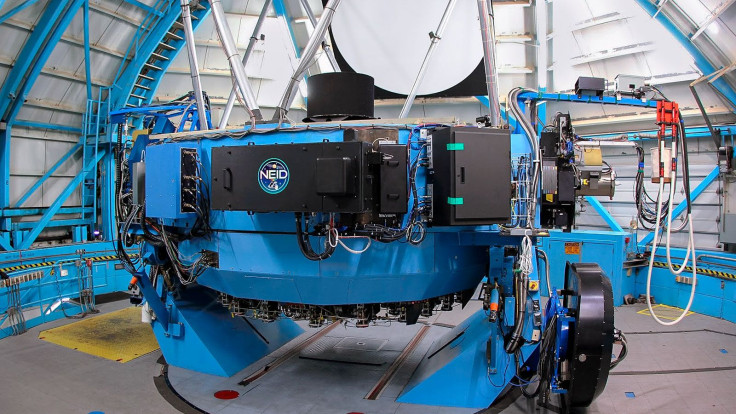NASA Unveils New Instrument That Determines Habitability Of Alien Planets

KEY POINTS
- NASA has a new instrument that can determine an exoplanet's habitability
- NEID measures a planet's weight by observing its effect on its host star
- Measuring an exoplanet's mass and density can help determine if it’s habitable
NASA has unveiled a new instrument that will help scientists determine if an exoplanet is habitable. It does so by measuring the weight of an alien world.
The instrument, known as NEID, was developed through support from NASA and the National Science Foundation. It is currently mounted on the WIYN telescope at the Kitt Peak National Observatory in Arizona.
According to NASA, NEID is capable of accurately measuring the weight of an exoplanet, which is a planet that lies beyond the Solar System. It weighs planets using the radial velocity method, which is a concept that scientists use to measure how much a host star wobbles or moves due to the gravitational pull of a nearby planet.
“The more massive the planet, the stronger its tug and the faster the star moves,” NASA said in a statement.
Within the Solar System, for instance, the gravitational pull of certain planets can cause the Sun to wobble. Jupiter, for example, causes the Sun to move back and forth at a rate of about 43 feet per second due to its immense gravitational force. Earth, on the other hand, can cause the Sun to wobble at about 0.3 feet per second.
Through the radial velocity method, NEID is able to calculate the mass and diameter of a planet. Scientists can then use these factors to determine the density of a planet. By identifying the density of a planet, scientists can analyze if it is rocky like Earth, Mars and Venus, or if it is mostly gaseous like Saturn and Jupiter.
As noted by NASA, these are the initial factors that can help determine if an exoplanet is habitable or not. In order to utilize NEID’s full potential, NASA plans to use it to analyze the findings from its exoplanet-hunting mission TESS, which stands for Transiting Exoplanet Survey Satellite.
“This is a first step toward finding potentially habitable worlds similar to Earth,” the agency explained. “When applied to many planets, the method provides a more comprehensive view of what types are most common in the galaxy and how other planetary systems form.”
© Copyright IBTimes 2025. All rights reserved.





















